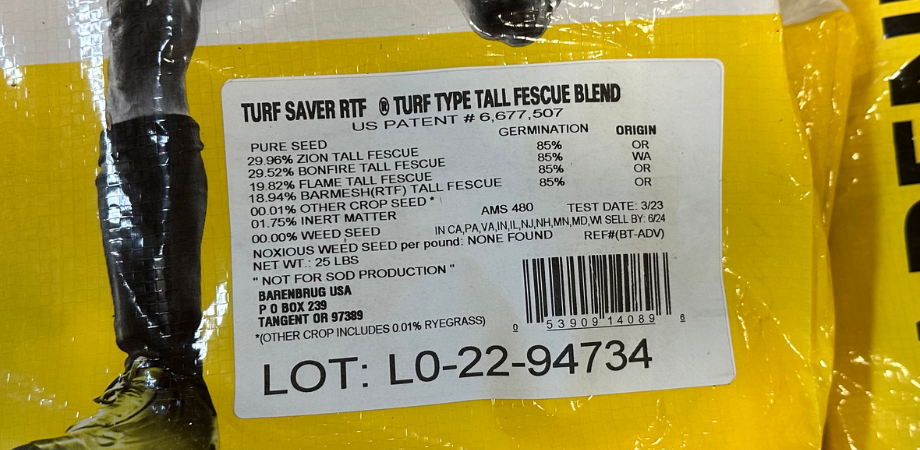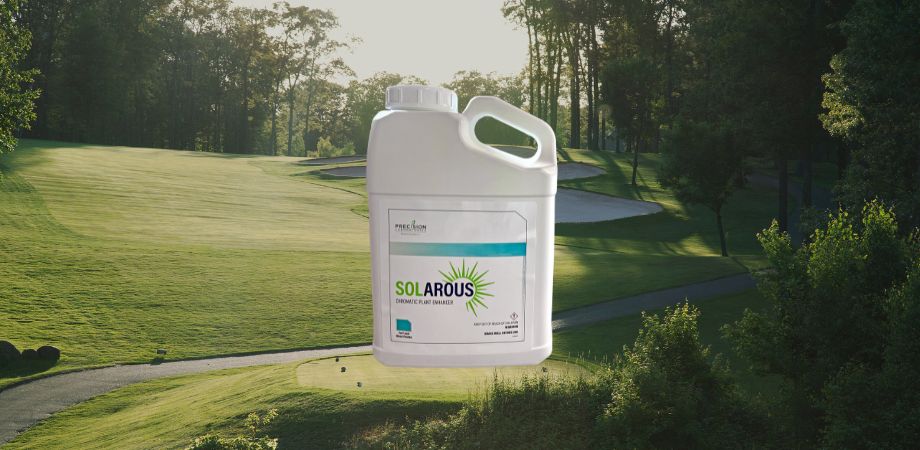A Helpful Guide to Seed Quality and Reading Seed Tags
Imagine stepping onto a lush, vibrant lawn that feels like a plush carpet under your feet. Whether you’re a seasoned professional or a home DIYer with a fresh green thumb, achieving that perfect green space begins with one critical step—choosing the right seed. But how do you know which seed to pick?
The secret lies in understanding seed quality and knowing how to read the seed tag. This article will guide you through the steps of evaluating turfgrass seed quality and decoding the seed tag, ensuring you make the best choice for your turf.
Why Seed Quality Matters for Turfgrass Managers
For turfgrass managers, seed quality is paramount. High-quality seeds result in robust, healthy turf that can withstand stress, resist diseases, and require less maintenance. On the other hand, poor seed quality can lead to weak, patchy grass that demands more time and resources.
Factors Determining Seed Quality
Several factors determine the quality of turfgrass seed, including purity, germination rate, and seed vigor.
Purity refers to the percentage of the seed that is actually the desired species. Higher purity means fewer weed seeds and other contaminants.
Germination rate is the percentage of seeds expected to sprout under ideal conditions. A higher germination rate translates to a denser, more uniform turf.
Seed vigor indicates the seed’s potential to grow under less-than-ideal conditions. Vigorous seeds establish quickly and are more resilient.
Importance of Purity in Turfgrass Seed
Purity is crucial because it directly impacts the quality of the turf. High-purity seeds produce consistent, high-quality grass with minimal weeds and off-types. This means less time spent on weeding and more time enjoying a pristine lawn.
Germination Rate and Its Impact on Turf Density
A high germination rate is essential for achieving a dense, uniform turf. If only a small percentage of seeds germinate, the turf will be thin and patchy, which can lead to increased weed invasion and other problems. Always aim for seeds with a germination rate of 85% or higher.
Understanding Seed Vigor in Turfgrass
Seed vigor is often overlooked but equally important. Vigor determines how well a seed performs under stressful conditions such as drought, poor soil, or extreme temperatures. High-vigor seeds establish quickly, ensuring your turf gets off to a strong start.
How to Read a Turfgrass Seed Tag
Reading a seed tag might seem daunting, but it’s simpler than you think. Seed tags provide critical information about the seed’s quality and characteristics, helping you make an informed decision.
Key Components of a Seed Tag
The seed tag contains several key components, including:
- Seed Name and Variety: Indicates the specific type of grass.
- Purity Percentage: Shows how much of the bag is the desired species.
- Germination Rate: The percentage of seeds expected to sprout.
- Other Crop Seed: Amount of unintended crop seeds present.
- Weed Seed Percentage: Indicates the presence of weed seeds.
- Inert Matter: Non-seed material such as sand or soil.
- Origin: The seed’s source location.
Deciphering Purity and Germination Rate on Seed Tags
When reading a seed tag, pay close attention to the purity and germination rate. A high purity percentage ensures that you’re getting mostly the desired grass species, while a high germination rate indicates the likelihood of successful seed sprouting.
Recognizing Other Crop Seed and Weed Seed
The presence of other crop seeds and weed seeds can affect the quality of your turf. Look for tags with low percentages of these contaminants to ensure a clean and healthy lawn.
The Role of Inert Matter in Seed Quality
Inert matter refers to non-living material in the seed bag. While a small amount is normal, excessive inert matter can reduce the overall quality of the seed mix. Aim for seed with minimal inert matter for best results.
Importance of Seed Origin
The origin of the seed can affect its performance. Seeds sourced from similar climates to your own are more likely to thrive in your environment. Check the seed tag to ensure the origin aligns with your location.
Tips for Selecting the Best Turfgrass Seed
Selecting the best turfgrass seed involves more than just reading the seed tag. Here are some additional tips to help you make the right choice:
- Research the best turfgrass species for your climate and soil type.
- Consult with local experts or extension services for recommendations.
- Compare several seed brands and varieties to find the best fit for your needs.
- Consider the specific use of the turf, such as high-traffic areas or ornamental lawns.
Sustainable Turf Management Through Seed Quality
Choosing high-quality seeds is also a sustainable practice. Quality seeds establish quickly and require less water, fertilizers, and pesticides, reducing the environmental impact of turf management.
Conclusion
Understanding and evaluating turfgrass seed quality is essential for anyone looking to achieve a lush, healthy lawn. By knowing how to read a seed tag and selecting high-quality seeds, you can ensure your turf not only looks great but also stands the test of time.
Whether you’re a turfgrass manager, golf course superintendent, sports field manager, landscaper, or homeowner, the right seed makes all the difference. Start your journey to a greener, healthier lawn today by investing in quality turfgrass seed. If you need further assistance, our team at Barenbrug is here to help you select the best seed for your needs. Happy planting!
Blog authored by Trevor Elliott, the Professional Turf Market Development Manager of Barenbrug USA and a Class A golf course superintendent. For more information on Barenbrug premium grass seed, visit barusa.com.












